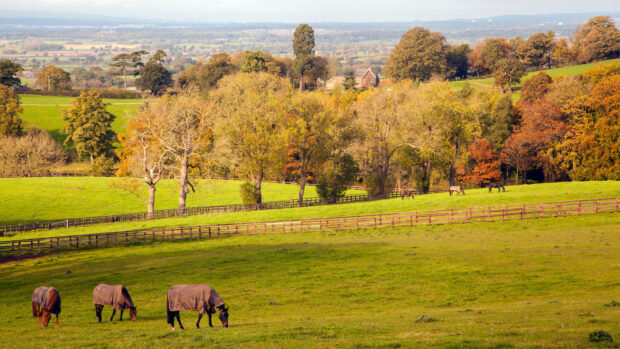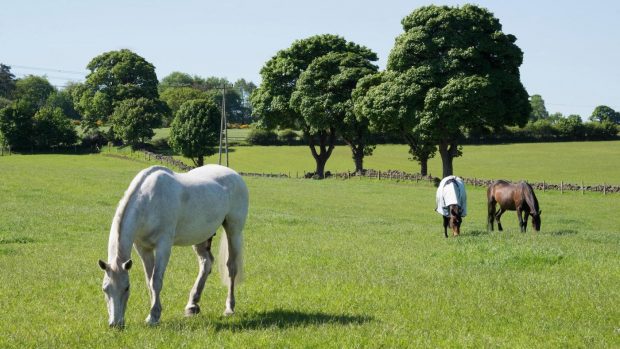Grass sickness is a terrible and frequently fatal disease that affects hundreds of horses every year.
It occurs in two different forms: the acute or sudden onset form of the disease causes symptoms identical to colic and the chronic or slow onset type results in weight loss and sometimes an inability to swallow.
The condition was first reported in north-east Scotland in 1909. Since then, it has been reported in most counties in Scotland, England and Wales. Circumstantial evidence suggests that the highest incidences occur in the north of England and Scotland.
Investigation into the disease began in the early 1900s and a number of interesting observations were made. Grass sickness occurred in horses that were allowed to graze, it was most prevalent in young horses and it occurred most frequently in the spring.
After many decades of investigation we are still unsure of the cause of grass sickness. When grass sickness occurs, it frequently affects just one or two horses on a particular pasture so this suggests that it is not an infectious disease
We do know that the nerves of horses affected by grass sickness have changes commonly associated with neurotoxins. This has prompted a search for sources of neurotoxins on the pasture of afflictedhorses.
Recently, the focus of attention has moved away from fungal toxins and researchers have been re-evaluating a hypothesis first proposed in the 1920s. At this time, it was noted that some of the symptoms of grass sickness were similar to those of infant botulism. It was proposed that the disease was a form of toxicoinfectious botulism.
Prof Ian Poxton at Edinburgh University investigated the gut contents of horses that had died of grass sickness. In a significant number he was able to identify one of the toxins of the bacterium Clostridium botulinum (C botulinum).
Three-year study
Liverpool University has completed a three-year study funded by the Home of Rest for Horses. They compared antibody levels to C botulinum in horses that were suffering from grass sickness and non-affected horses grazing the same pasture.
They found that horses with grass sickness had significantly lower antibody levels to this bacterium, and to one of its neurotoxins, than those not affected.
This is strong evidence to suggest that antibodies against C botulinum are protective against grass sickness and, by implication, that C botulinum has an important role to play in causing the disease.
Another project that has been recently completed was conducted by Dr Bruce McGorum of Edinburgh University. He was addressing the question of why only one horse in a group was affected by this disease.
His results indicate that the antioxidant status of individual animals may have a role to play in grass sickness. Many toxins are dealt with in the horse’s body by oxidation to a less harmful metabolite. Failure of this system to deal with ingested toxins may predispose animals to disease.
Risk factors for equine grass sickness
- Young horses are at greater risk
- Spring and summer months are the peak grass sickness season (May to July)
- Access to grass
- Recent change of pasture
- Previous grass sickness on the premises increases risk
|
Read the full story including the lateston research in this week’s Horse & Hound (26 September), or click here to subscribe and enjoy Horse & Hound delivered to your door every week. |
Read more grass sickness stories:



